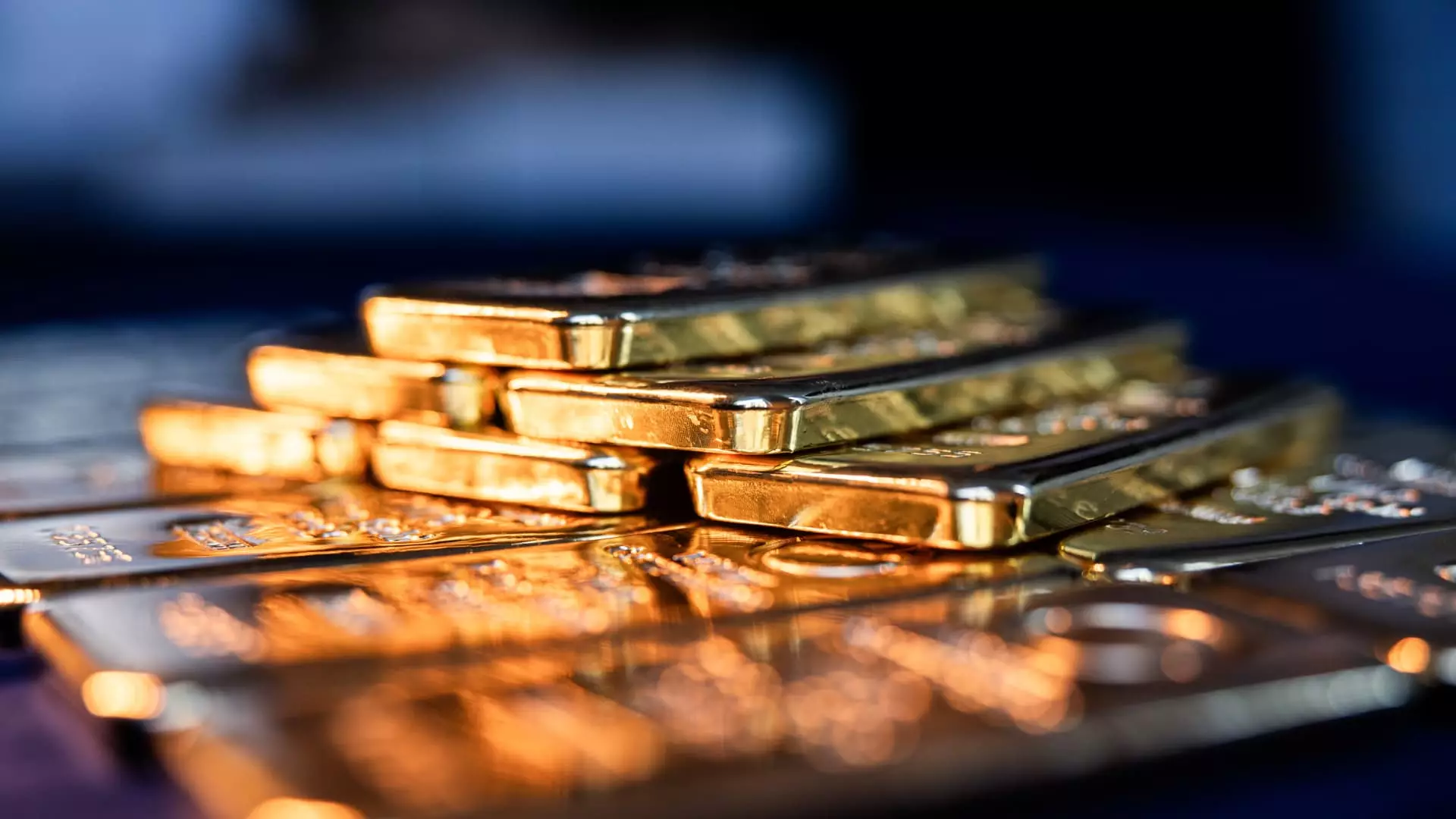Gold has traditionally been viewed as a safe-haven asset in tumultuous economic climates. This age-old perception persists despite evolving market dynamics. As discussions of a global trade war heat up and fears linger about a potential recession, the price of gold has surged significantly. Currently trading above $3,000 per ounce, gold prices continue to break records, suggesting a strong investor faith in its stability. However, this enthusiasm might be misplaced, with experts like Sameer Samana from the Wells Fargo Investment Institute warning that we may be witnessing “maximum optimism” in the gold market.
In truth, investors diving into gold at this price point should proceed with caution. The prevailing sentiment may lead to an inflated expectation of continued price increases, creating potential pitfalls akin to investing in a bubble. Entering the gold market late can be detrimental, especially when significant gains have already been realized. The momentum observed may soon falter as market realities catch up with unbridled optimism.
Price Peaks and Risky Pursuits
The recent spike in gold prices—an impressive 21% increase year to date—could entice investors to hop on the bandwagon. Fear-driven buying often leads to regret, especially when prices are propelled by sporadic geopolitical tensions rather than solid economic indicators. Analyst sentiments diverge with some believing gold values could continue their ascent while others caution against chasing the recent highs.
Investors are often swayed by current events, and the renewed trade conflicts involving tariffs set forth by the Trump administration only serve to escalate anxiety in the market. The trade war between the U.S. and China has generated turmoil, yet depending solely on gold could be a precarious strategy. While gold historically garners attention during uncertain financial climates, its past performance during recessions leaves room for doubt on its reliability as a protective asset.
Physical Gold: A Double-Edged Sword
The allure of tangible wealth attracts many, leading to a notable increase in gold purchases from retail outlets, including major retailers like Costco. Consumers have invested substantially in physical gold, seeking solace amid financial unpredictability. However, relying on physical gold can be akin to playing with fire, especially if uncertainty drives the impulse.
While gold can serve as an emergency asset, the practicality of converting it into liquid cash during a financial crisis remains questionable. As Sameer Samana points out, holding physical gold might only aid in bartering when the financial system appears on the brink of collapse, raising concerns about its feasibility as a long-term investment strategy.
Investors seeking efficiency could find better options through gold-backed Exchange-Traded Funds (ETFs) like SPDR Gold Shares or iShares Gold Trust. These vehicles offer exposure to gold prices without the headaches of storage, insurance, and the market costs associated with physical ownership. Financial professionals often advise allocating a minimal percentage of one’s portfolio to gold, cautioning against overexposure in favor of balanced investment strategies.
Jewelry as Investment: A Tangible Dilemma
Beyond raw gold, fine jewelry provides an intriguing intersection of aesthetic pleasure and potential financial reward. Jewelry crafted from higher karat gold claims a baseline value tied to its precious metal content, offering a unique proposition for investors. Items from prestigious designers carry intrinsic worth that could appreciate over time, yet findings suggest these should be viewed as secondary benefits to their primary enjoyment.
The investment landscape in jewelry is influenced by aesthetic appeal coupled with craftsmanship. High-quality pieces from renowned brands can serve both personal and financial interests, allowing investors to navigate a dual-purpose acquisition. Nevertheless, even if jewelry maintains strong value, purchasing with the intent of future financial gain involves a level of unpredictability that many might not be aware of.
Navigating the Investment Maze
In uncertain economic times, potential yields sometimes beckon with louder voices. Concerns surrounding current tariff policies and their ramifications for economic growth are forcing many financial advisors to reconsider their clients’ positions in gold. Some suggest that maintaining higher cash reserves could be a more prudent course of action, rather than making impulsive decisions to chase gold prices.
This raises an essential discussion point: how do investors balance their portfolios in unpredictable markets? While some see gold as a reliable “flight to safety,” the reality is that incorporating gold should not eclipse the need for diversified asset classes. Traditional assets, including bonds, can often serve more effectively in cushioning against a downturn than gold, despite its reputation.
Ultimately, the discussion surrounding gold as an investment taps into an enduring human psychology: the desire for tangible security in volatile times. However, regarding such investments with a critical eye is vital to navigate the complexities of modern financial landscapes effectively.

